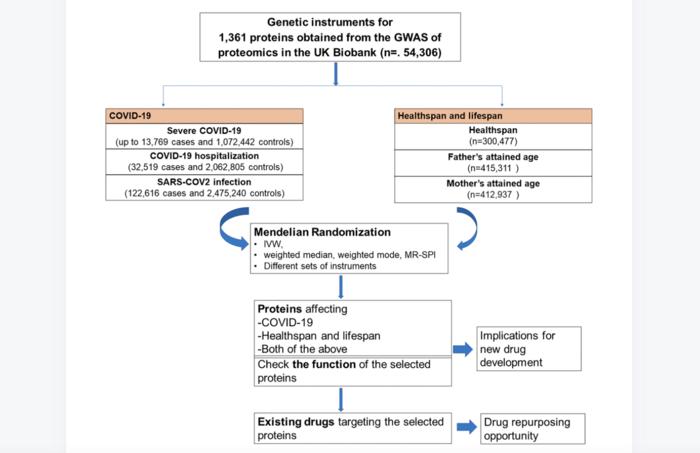Decoding the Mystery of Birdsong Evolution
May 21, 2025 Untangling the Acoustic Puzzle: New Insights into Birdsong Evolution The complexity of bird vocalizations has long fascinated both scientists and nature enthusiasts. Birdsong, composed of intricate variations of pitch and volume, is not only a fundamental means of avian communication but also a remarkable product of evolutionary processes. Recent research emerging from […]


May 21, 2025
Untangling the Acoustic Puzzle: New Insights into Birdsong Evolution
The complexity of bird vocalizations has long fascinated both scientists and nature enthusiasts. Birdsong, composed of intricate variations of pitch and volume, is not only a fundamental means of avian communication but also a remarkable product of evolutionary processes. Recent research emerging from the University of Massachusetts Amherst has illuminated a critical aspect of this phenomenon by uncovering the multifaceted relationship between a bird’s song amplitude—the loudness—and its frequency—the pitch. This comprehensive analysis challenges long-held assumptions about mechanical constraints in avian vocalizations and opens new avenues for understanding how these musical creatures have sculpted their calls through evolution.
Historically, biologists have debated whether birds possess the physiological ability to modulate their pitch independently as they increase volume or if inherent mechanical limitations strictly govern this relationship. It is a question rooted in the fundamental physics of sound production: as one increases the loudness of a vocalization, does the pitch necessarily rise as a byproduct? Analogies drawn from human speech hint at mechanical restrictions—when a person shouts louder, their voice often ascends to higher frequencies. Yet, animals capable of communication across diverse ecological contexts might have evolved different vocal strategies.
The challenge that has hampered progress in this domain has been the difficulty in precisely measuring the amplitude of wild birds’ vocalizations in natural habitats. Traditional methods lacked the temporal resolution or field durability to capture the millisecond fluctuations intrinsic to birdsongs. Thanks to recent advancements in bioacoustic technology, researchers can now obtain fine-grained, high-fidelity data from free-ranging birds, enabling the first broad-scale comparative studies that correlate amplitude and frequency variations across species.
Leading this investigation, graduate student João C. T. Menezes and professor Jeffrey Podos undertook an ambitious survey involving 53 bird species from diverse taxa, spanning from the familiar Canada goose to the elusive black-and-gold cotinga native to Brazil. By meticulously analyzing hundreds of vocal samples, they sought patterns in how pitch changes as birds modulate the loudness of their calls. Their findings defy simplistic explanations and underscore the complexity of evolutionary pressures on avian communication.
Rather than supporting a singular model, the study reveals a spectrum of relationships. Approximately half of the species demonstrated an increase in pitch corresponding with louder calls, consistent with the notion of mechanical constraints shaping vocal production. Conversely, a significant subset exhibited an inverse pattern, where lower frequencies were amplified as amplitude rose. A remaining group showed no clear correlation, suggesting a multifactorial influence involving behavioral context, ecological niche, and anatomical variation.
Such diversity implies that bird species employ different strategies tuned by evolutionary and physiological factors. Those increasing pitch with volume may do so due to inherent limitations in their vocal apparatus that prevent simultaneous low-frequency, high-amplitude calls. Alternatively, species capable of “dropping” their pitch while singing loudly might have evolved specialized mechanisms allowing them to optimize call propagation over long distances, capitalizing on the preferential transmission of low-frequency sounds through complex environments.
Particularly noteworthy is the distinctive behavior of songbirds (Passeri), which appear capable of fine-tuning their frequency range as they vary amplitude. Instead of broadly scaling pitch upwards or downwards, songbirds often narrow the spectrum of frequencies they employ, effectively focusing energy within a specific bandwidth. This refined control, absent in many other bird groups, likely results from anatomical adaptations in their syrinx—the avian vocal organ—permitting the active modulation of vocal tension and airflow.
The capacity for such precise control aligns with the evolutionary success of songbirds, which represent more than half of all bird species globally. As Menezes likens, songbirds resemble opera singers who modulate vocal frequencies strategically to maximize acoustic projection and resonance. This analogy underscores the sophistication with which these birds negotiate the physical constraints of their vocal systems, balancing physiological capabilities and selective pressures to communicate effectively.
The findings of this study have profound implications for evolutionary biology and animal communication theory. They suggest that the interplay between physiological constraints and environmental selection has produced a tapestry of vocal strategies rather than a uniform pattern. This complexity not only enriches our understanding of avian biology but also provides a framework for interpreting vocal evolution in other taxa.
Moreover, the research underscores the importance of integrating fine-scale acoustic measurements with evolutionary analysis. By harnessing cutting-edge technology to capture naturalistic vocal behavior, scientists can now explore questions that were previously theoretical or speculative. Future investigations may focus on the neural control mechanisms enabling such vocal flexibility, or on ecological factors that drive the adoption of particular vocal strategies.
Understanding the dynamic relationship between amplitude and frequency in birdsong has broader consequences. The ability to broadcast signals effectively over varying distances is a fundamental challenge for all communicative organisms, influencing mate attraction, territorial defense, and predator avoidance. This research illuminates one aspect of how natural selection shapes such signals amid competing mechanical and environmental constraints.
For the casual observer, this study invites a new appreciation when listening to birdsong. The subtle fluctuations in pitch and volume are not mere random variations but may represent complex behavioral messages encoded through evolutionary fine-tuning. The next time one hears a songbird’s melodic call or a louder honk of a goose, the nuanced dance between amplitude and frequency may be perceived with greater curiosity and wonder.
Ultimately, this research marks a significant milestone in decoding the acoustic ecology of birds and opens promising directions for bioacoustics, evolutionary biology, and conservation science. By peeling back layers of complexity in birdsong evolution, the team at UMass Amherst has made a lasting contribution to our comprehension of the natural world’s intricate symphony.
Subject of Research: Relationships between amplitude (volume) and frequency (pitch) in bird vocalizations and their evolutionary implications.
Article Title: Diverse relationships between amplitude and frequency in bird vocalizations
News Publication Date: 21-May-2025
Web References:
https://doi.org/10.1098/rspb.2025.0781
Image Credits: UMass Amherst
Keywords: birdsong, vocal amplitude, pitch, frequency, avian vocalization, bird evolution, songbirds, bioacoustics, vocal physiology, communication, syrinx, acoustic ecology
Tags: acoustic puzzle of birdsongavian communication strategiesavian vocalizations complexitybirdsong evolution researchevolution of bird callsevolutionary processes in natureintricate variations in bird songsmechanical constraints in bird communicationphysiological ability of birds to modulate pitchrelationship between pitch and amplitudeunderstanding bird vocalization mechanicsUniversity of Massachusetts Amherst study
What's Your Reaction?


































